April 22 – Earth Day
Recycling| 6 Comments »". . . on April 22, 1970, Earth Day was held, one of the most remarkable happenings in the history of democracy. . . " – American Heritage Magazine, October 1993
How the First Earth Day Came About
By Senator Gaylord Nelson, Founder of Earth Day
What was the purpose of Earth Day? How did it start? These are the questions I am most frequently asked.
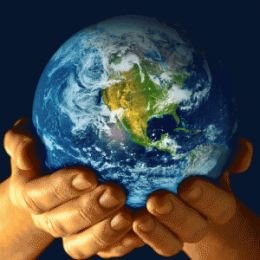 Actually, the idea for Earth Day evolved over a period of seven years starting in 1962. For several years, it had been troubling me that the state of our environment was simply a non-issue in the politics of the country. Finally, in November 1962, an idea occurred to me that was, I thought, a virtual cinch to put the environment into the political "limelight" once and for all. The idea was to persuade President Kennedy to give visibility to this issue by going on a national conservation tour. I flew to Washington to discuss the proposal with Attorney General Robert Kennedy, who liked the idea. So did the President. The President began his five-day, eleven-state conservation tour in September 1963. For many reasons the tour did not succeed in putting the issue onto the national political agenda. However, it was the germ of the idea that ultimately flowered into Earth Day.
Actually, the idea for Earth Day evolved over a period of seven years starting in 1962. For several years, it had been troubling me that the state of our environment was simply a non-issue in the politics of the country. Finally, in November 1962, an idea occurred to me that was, I thought, a virtual cinch to put the environment into the political "limelight" once and for all. The idea was to persuade President Kennedy to give visibility to this issue by going on a national conservation tour. I flew to Washington to discuss the proposal with Attorney General Robert Kennedy, who liked the idea. So did the President. The President began his five-day, eleven-state conservation tour in September 1963. For many reasons the tour did not succeed in putting the issue onto the national political agenda. However, it was the germ of the idea that ultimately flowered into Earth Day.
I continued to speak on environmental issues to a variety of audiences in some twenty-five states. All across the country, evidence of environmental degradation was appearing everywhere, and everyone noticed except the political establishment. The environmental issue simply was not to be found on the nation’s political agenda. The people were concerned, but the politicians were not.
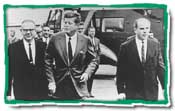 After President Kennedy’s tour, I still hoped for some idea that would thrust the environment into the political mainstream. Six years would pass before the idea that became Earth Day occurred to me while on a conservation speaking tour out West in the summer of 1969. At the time, anti-Vietnam War demonstrations, called "teach-ins," had spread to college campuses all across the nation. Suddenly, the idea occurred to me – why not organize a huge grassroots protest over what was happening to our environment?
After President Kennedy’s tour, I still hoped for some idea that would thrust the environment into the political mainstream. Six years would pass before the idea that became Earth Day occurred to me while on a conservation speaking tour out West in the summer of 1969. At the time, anti-Vietnam War demonstrations, called "teach-ins," had spread to college campuses all across the nation. Suddenly, the idea occurred to me – why not organize a huge grassroots protest over what was happening to our environment?
I was satisfied that if we could tap into the environmental concerns of the general public and infuse the student anti-war energy into the environmental cause, we could generate a demonstration that would force this issue onto the political agenda. It was a big gamble, but worth a try.
 At a conference in Seattle in September 1969, I announced that in the spring of 1970 there would be a nationwide grassroots demonstration on behalf of the environment and invited everyone to participate. The wire services carried the story from coast to coast. The response was electric. It took off like gangbusters. Telegrams, letters, and telephone inquiries poured in from all across the country. The American people finally had a forum to express its concern about what was happening to the land, rivers, lakes, and air – and they did so with spectacular exuberance. For the next four months, two members of my Senate staff, Linda Billings and John Heritage, managed Earth Day affairs out of my Senate office.
At a conference in Seattle in September 1969, I announced that in the spring of 1970 there would be a nationwide grassroots demonstration on behalf of the environment and invited everyone to participate. The wire services carried the story from coast to coast. The response was electric. It took off like gangbusters. Telegrams, letters, and telephone inquiries poured in from all across the country. The American people finally had a forum to express its concern about what was happening to the land, rivers, lakes, and air – and they did so with spectacular exuberance. For the next four months, two members of my Senate staff, Linda Billings and John Heritage, managed Earth Day affairs out of my Senate office.
Five months before Earth Day, on Sunday, November 30, 1969, The New York Times carried a lengthy article by Gladwin Hill reporting on the astonishing proliferation of environmental events:
"Rising concern about the environmental crisis is sweeping the nation’s campuses with an intensity that may be on its way to eclipsing student discontent over the war in Vietnam…a national day of observance of environmental problems…is being planned for next spring…when a nationwide environmental ‘teach-in’…coordinated from the office of Senator Gaylord Nelson is planned…."
It was obvious that we were headed for a spectacular success on Earth Day. It was also obvious that grassroots activities had ballooned beyond the capacity of my U.S. Senate office staff to keep up with the telephone calls, paper work, inquiries, etc. In mid-January, three months before Earth Day, John Gardner, Founder of Common Cause, provided temporary space for a Washington, D.C. headquarters. I staffed the office with college students and selected Denis Hayes as coordinator of activities.
Earth Day worked because of the spontaneous response at the grassroots level. We had neither the time nor resources to organize 20 million demonstrators and the thousands of schools and local communities that participated. That was the remarkable thing about Earth Day. It organized itself.
 GREEN LIVING TIPS FOR YOUR WORK & LIFE:
GREEN LIVING TIPS FOR YOUR WORK & LIFE:
http://www.greenlivingtips.com/blogs/369/Earth-Day-2009.html
U.S. GOVERNMENT EVENTS & INFORMATION:
http://www.earthday.gov/
Earth Day is a time to celebrate gains we have made and create new visions to accelerate environmental progress. Earth Day is a time to unite around new actions. Earth Day and every day is a time to act to protect our planet.
Earthday.gov is a cooperative effort across the entire U.S. government.
GET INVOLVED!
"Commitment with accountability closes the gap between intention and results."
Sandra Gallagher, Co-Author of Thinking Into Results
Sheryl Roush presents “Star Trek and Toastmasters: Parallel Universe”
Speaking Events| No Comments »Sheryl Roush presents "Star Trek and Toastmasters: Parallel Universe"
 Saturday, June 7, 2008, professional speaker Sheryl Roush presented a most unique program to a full house at the western Regional Conference of Toastmasters International, at the Anaheim DoubleTree Hotel. With her 60-minute program entitled "TO BOLDLY GO," Sheryl addressed the "Parallel Universe" between the creation and philosophies of both Star Trek and Toastmasters International.
Saturday, June 7, 2008, professional speaker Sheryl Roush presented a most unique program to a full house at the western Regional Conference of Toastmasters International, at the Anaheim DoubleTree Hotel. With her 60-minute program entitled "TO BOLDLY GO," Sheryl addressed the "Parallel Universe" between the creation and philosophies of both Star Trek and Toastmasters International.
The first three minutes of the slide program–set to theme songs from Star Trek–sited historical references to John F. Kennedy’s challenge to place a man on the moon, starting with black and white images, building to color images from the space station and Hubble photographs of cosmos, into Star Trek: The Original Series, complete with black-and-white photos of Captain Kirk, Mr. Spock and the bridge crew. Slide sequences followed in color, highlighting Star Trek: The Next Generation; Star Trek: Deep Space Nine; Star Trek: Voyager; and Star Trek: Enterprise.
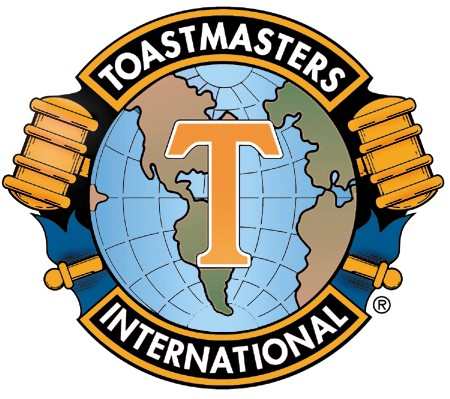
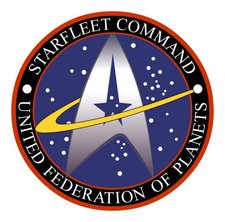 Both "visionaries" were spotlighted and paralleled: Dr. Ralph C. Smedley, founder of Toastmasters International, the world’s largest non-profit educational organization; and Gene Roddenberry, creator of the globally recognized science fiction, blockbuster movies, and Starfleet Academy.
Both "visionaries" were spotlighted and paralleled: Dr. Ralph C. Smedley, founder of Toastmasters International, the world’s largest non-profit educational organization; and Gene Roddenberry, creator of the globally recognized science fiction, blockbuster movies, and Starfleet Academy.
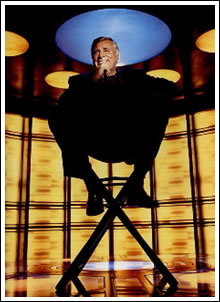 Both popular in culture, philosophies, mission, vision, peace-seeking movement and enlightenment, Toastmasters has served 4 million people in 93 countries since 1924… Star Trek, countless millions "believers," with 46 million website references.
Both popular in culture, philosophies, mission, vision, peace-seeking movement and enlightenment, Toastmasters has served 4 million people in 93 countries since 1924… Star Trek, countless millions "believers," with 46 million website references.
Both "movements" are dedicated to the advancement of mankind, through communication and leadership, as Ms. Roush highlighted these parallels including their top three leadership positions, officer insignias, organizational structure, and the chain of command.
 Roush paralleled Roddenberry’s early Star Trek "Communicator" with today’s flip-open cellphone, as well as the "Tricorder" device to today’s iPhone technology. She stated that unlike most "science fiction," Star Trek and Roddenberry’s ideas were "science fact" that were either medically or scientifically proven–or could be–created. True enough. "Phaser pistols" became today’s laser technology.
Roush paralleled Roddenberry’s early Star Trek "Communicator" with today’s flip-open cellphone, as well as the "Tricorder" device to today’s iPhone technology. She stated that unlike most "science fiction," Star Trek and Roddenberry’s ideas were "science fact" that were either medically or scientifically proven–or could be–created. True enough. "Phaser pistols" became today’s laser technology.
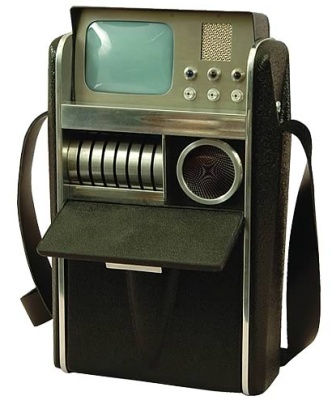 Medical tricorders have been created. Worm hole theory proven. Voice-activated computers and translation technology are now actively in use. Roddenberry actively consulted with NASA, the Armed Forces, and the medical professions.
Medical tricorders have been created. Worm hole theory proven. Voice-activated computers and translation technology are now actively in use. Roddenberry actively consulted with NASA, the Armed Forces, and the medical professions.
As a global movement for better listening, thinking and speaking skills, Toastmasters just chartered a new Club in Iraq in May, proving "peaceful resolution."
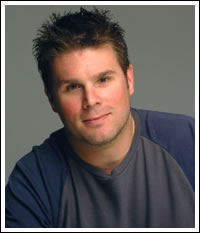 And just so you know how powerful the Toastmasters program is, Eugene W. Roddenberry III, "Rod" joined Club in San Diego, California. "Star Trek presents us with a possible future where we as a species have outgrown our old-world beliefs and insecurities. Having seen the beauty in our uniqueness and diversity, we will have found the commonality that binds us all. In this possible future, we will come together as a species and work for the betterment of all life. I believe knowledge is the key to this future and we must continually challenge ourselves by questioning what we know and reaching into the unknown. Toastmasters allows me to challenge myself and for that, I am grateful."
And just so you know how powerful the Toastmasters program is, Eugene W. Roddenberry III, "Rod" joined Club in San Diego, California. "Star Trek presents us with a possible future where we as a species have outgrown our old-world beliefs and insecurities. Having seen the beauty in our uniqueness and diversity, we will have found the commonality that binds us all. In this possible future, we will come together as a species and work for the betterment of all life. I believe knowledge is the key to this future and we must continually challenge ourselves by questioning what we know and reaching into the unknown. Toastmasters allows me to challenge myself and for that, I am grateful."
As with Toastmasters, Gene’s work also continues, and the legacy lives on. Rod is directing "Trek Nation" a documentary tribute about Trekkees, Trekkers and the life of his father.
Even if you are "not into" Toastmasters or Star Trek, just remember this…
"Resistance IS futile. You will be assimilated!"
